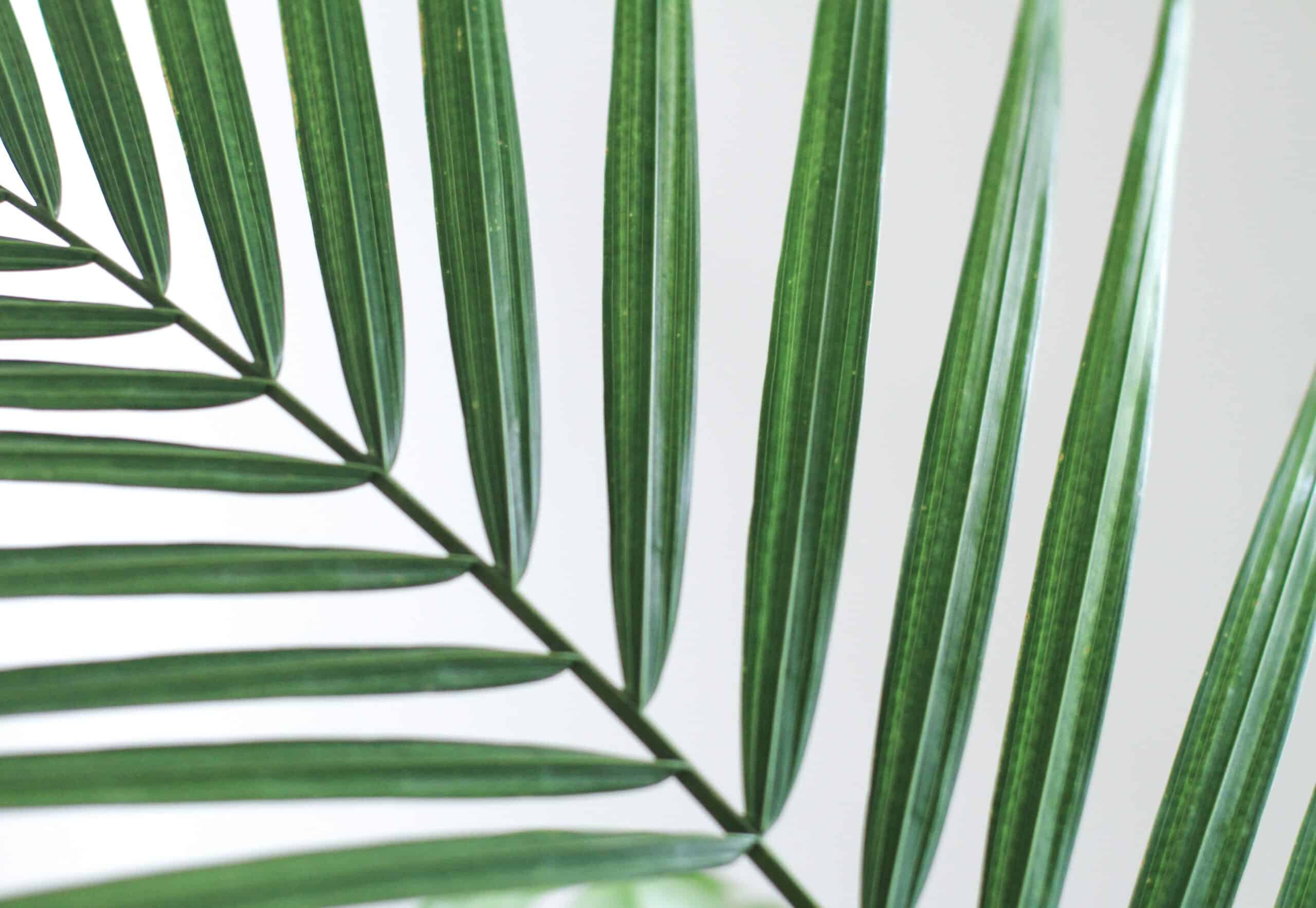The majesty palm is an ethereal plant that brings a touch of paradise to your home. Not only are they visually stunning, but they are also easy to care for and require minimal maintenance. The majesty palm is a great fit for the novice gardener looking to add a bit of extra life to their home. From potting and repotting to proper watering techniques, you’ll quickly be able to master the art of growing and caring for these elegant palms.
Do you ever dream of being whisked away to a tropical paradise? With the addition of a majesty palm in your home, it’s like having a little slice of heaven right at your fingertips! These majestic plants bring serenity and beauty wherever they go, with their feathery fronds creating an instant focal point in any room. Plus, with their easy-care nature, you can enjoy the look of the majesty palm without having to worry about complicated maintenance routines or expensive upkeep costs.
Caring for a majesty palm doesn’t have to be difficult or time consuming. With just a few simple tips, you’ll have all the knowledge necessary to ensure your plant grows healthy and happy for years to come. From choosing the perfect potting soil mix for your new friend, through proper watering and fertilization techniques – we’ve got everything you need in this guide on how to grow and care for majesty palms!
What Is A Majesty Palm?
Majesty palm (Ravenea rivularis) is a stately, attractive tropical palm that can be grown indoors. It has a tall, single trunk with a crown of gracefully arching pinnate leaves. This lush evergreen grows slowly and can reach up to 15 feet tall in its native environment, but indoors it will remain much smaller. Majesty palms require bright, indirect light and moderate humidity to thrive.
When caring for majesty palms, it’s important to water them consistently so the soil stays evenly moist. Fertilize your majesty palm every two weeks during spring and summer using a balanced liquid fertilizer diluted to half strength. Prune away any brown or yellow fronds from the plant as needed with clean garden shears.
Majesty palms prefer temperatures between 65 and 75 degrees Fahrenheit and should be protected from drafts and cold air. Avoid placing them near vents, radiators, fireplaces, or windows that get direct sun as this can cause leaf burn on the foliage. With proper care, majesty palms will bring an exotic touch of the tropics into your home for many years to come.
Where Should You Place A Majesty Palm?
Like a feathery crown, the majestic majesty palm is the perfect addition to any home. Its lush foliage and tall stature are sure to make a statement in any room. But with anything so grandiose, it’s important to know where this regal plant should be placed.
The first thing to note when deciding where to place your majesty palm is that it prefers bright indirect light or filtered sunlight. This means that while they won’t do well in dark corners of your home, they also don’t tolerate direct sunlight. A spot near an east-facing window or a few feet away from a south-facing window should provide the right amount of light for your plant.
It’s also important to keep in mind that majesty palms prefer warm temperatures between 65 and 75 degrees Fahrenheit (18-24 degrees Celsius). If you live in a colder climate, make sure to place it away from cold drafts such as air conditioners or heaters. Keeping these considerations in mind will ensure that your palm is placed in the ideal environment for growth and health. With its proper placement, you can enjoy this regal plant for many years to come.
How To Water A Majesty Palm
Watering a majesty palm may be one of the most important parts of caring for it. But how best to do it? How much water does this tropical plant need? With detailed instructions and tips, you can ensure your majesty palm looks its best for many years.
When it comes to watering a majesty palm, there is no hard and fast rule—it will depend on several factors such as the age of the plant, the size of the pot and container, as well as local environmental conditions. However, in general, water when the top inch or two of soil is dry. To keep humidity up around the plant, try misting with warm water on hot days or placing pebbles in a tray filled with water beneath the pot.
In order to avoid over-watering your majesty palm which can lead to root rot and other issues, err on the side of caution: if unsure whether to water or not, don’t! This is especially true during winter months when growth slows down—in these times it’s important not to overwater. Keeping your majesty palm moist but never soggy will guarantee that it remains healthy and beautiful for years to come.
But how much sunlight does a majesty palm need? That’s an essential question we’ll explore next…
How Much Sunlight Does A Majesty Palm Need?
Growing a majesty palm is no easy feat. It needs the right environment and plenty of care to thrive. How much sunlight does it need? This key question will determine whether your majestic palm will reach its full potential.
From the sunny beaches of Madagascar to the comfort of your home, a majesty palm needs adequate sunlight to grow. While they do not require direct exposure, they do require bright indirect light for several hours each day. Natural light from east or south-facing windows is ideal, but careful attention must be paid that the leaves are not burned by too much sun exposure.
By providing enough natural light, you can help ensure that your beautiful majesty palm reaches its full potential. The process requires patience and attention to detail but with proper care, you can create a paradise right in your own home!
How To Fertilize A Majesty Palm
It goes without saying that fertilizing a majesty palm is an essential part of keeping it healthy. Fertilizer can help the plant reach its full potential and give it the nutrients it needs to thrive. So, how does one go about fertilizing a majesty palm? Read on for some tips to get your majesty palm thriving again in no time.
First things first, you’ll need to select the appropriate fertilizer for your majesty palm. A slow-release fertilizer with balanced nitrogen, phosphorus, and potassium is best for these plants. Aim for one with a ratio between 8-2-12 or 10-5-10. Additionally, make sure you don’t overdo it – too much fertilizer can burn your plant’s roots!
Before applying any fertilizer, make sure the soil around the base of your majesty palm is moistened so that the fertilizer can be absorbed properly. You should also avoid getting any fertilizer on the leaves of your plant as this may cause them to discolor or even burn them! Finally, apply the fertilizer in an even layer around the base of your plant and gently work it into the soil – try not to disturb any of its root system when doing this. With these easy steps, you’ll have your Majesty Palm looking better than ever in no time! Now that fertilizing a Majesty Palm has been covered, let’s move on to discussing how to propagate a Majesty Palm for even more lush greenery in your home.
How To Propagate A Majesty Palm
Propagating a majesty palm is an easy and rewarding way of growing new plants from existing ones. For instance, consider the case of ‘Julia’, who wanted to add more greenery to her living space. After researching propagation techniques, she decided to propagate her majesty palm by division. She was delighted when her efforts produced several healthy plants.
Propagation by division is the most common method for reproducing majesty palms, and it requires minimal effort. All that’s needed are a clean pair of scissors or pruning shears, a few containers for potting, and some quality potting soil. By carefully separating the plant’s base into two or more sections and then replanting them in individual pots, Julia was able to multiply her original Majesty Palm with ease.
The resulting new plants need plenty of care to help them thrive in their new homes. Regular watering with lukewarm water is essential, as well as providing adequate light and humidity levels; this will help ensure they develop strong root systems and lush foliage. With the right conditions in place, Julia’s propagated Majesty Palms grew quickly and soon filled out their pots with beautiful fronds! Transitioning now into how to prune a majesty palm – pruning can help maintain a healthy appearance by removing dead leaves or fronds that have become discolored over time.
How To Prune A Majesty Palm
A majesty palm is like a gardener’s prized possession, with its lush green fronds and tropical appearance. Taking care of it requires delicate attention and timely pruning, to ensure the plant can reach its full potential. To do this, one must understand how to prune a majesty palm correctly.
Just like any other tree or bush in a garden, a majesty palm needs regular trimming. Pruning helps remove dead or dying fronds and encourages new growth from the center of the plant. This is especially important for keeping the shape of the palm neat and attractive. When pruning a majesty palm, it’s important to use sharp, sterile tools and to wear gloves so as not to spread any pathogens or diseases. Start by cutting off browned tips at an angle to create an even look. Then work your way up the frond until you reach the base of the leaves. Cut away any that appear dried up or diseased. It may be necessary to remove entire fronds if they are severely damaged or beyond repair.
Pruning a majesty palm should be done at least once per year in order to keep it looking tidy and healthy. The best time for this is when new growth appears in springtime but it can also be done during summer or fall if needed. Once all of the dead foliage has been removed, apply some fertilizer around the base of the plant for additional nourishment and allow plenty of water for adequate hydration throughout growing season.
With proper maintenance and timely pruning, your majestic beauty will stay lush and vibrant for years to come!
How To Repot A Majesty Palm
Repotting a majesty palm can be a beneficial way to ensure that it stays healthy and continues to grow. Repotting should be done every two to three years in the spring, using a pot with drainage holes that’s one size larger than the previous pot, and new soil. When you’re ready to repot your majesty palm, begin by carefully taking it out of its existing pot. If necessary, gently loosen any of the dense roots at the base of the plant before placing it into its new pot.
Fill in the new pot with fresh soil up to about an inch from the rim, then place your majesty palm on top. Gently fill in more soil around and between the roots, firming it down as you go until the plant is firmly rooted into its new home. Water generously after repotting and allow for drainage. A saucer or tray at the bottom of your pot will help catch excess water and keep your floor clean.
By giving your majesty palm a fresh environment in which to thrive, you’ll have taken an important step towards keeping it healthy for years to come. The next step is learning how pests and diseases can affect your majestic palm so you can take preventative measures when necessary.
What Pests And Diseases Can Affect A Majesty Palm?
Who knew something so beautiful and majestic could be so much trouble? Majesty palms can make a stunning addition to any room, but with them come some pesky pests and diseases. It’s all part of the package! Let’s take a look at what problems majesty palms can face – and how we can tackle them.
It’s no surprise that majesty palms are susceptible to common houseplant pests like mealybugs, spider mites, and whiteflies. Fortunately, these pests are easy enough to treat with insecticidal soap or neem oil. While you’re at it, inspect the plant for signs of disease such as brown spots on the leaves or yellowing fronds.
Root rot is particularly dangerous for majesty palms, since their roots are especially sensitive to overwatering. To prevent root rot, make sure you water your palm sparingly (about once every two weeks) and allow the soil to dry out between waterings. Remember: it’s always better to underwater than overwater!
You may not want to hear it, but caring for majesty palms can be a challenge – even if they do look fantastic in our homes. So don’t forget: regular monitoring and maintenance are key when it comes to keeping your majesty palm healthy. Now let’s see what treatment options we have for tackling those pesky pests and diseases!
How To Treat Pests And Diseases On A Majesty Palm
In order to keep your majesty palm healthy, it’s important to be aware of common pests and diseases that can affect them. Fortunately, there are treatments available that can help treat any issues your plant may have.
First, you should check your majesty palm for signs of pests or disease. These can include discoloration on the leaves, wilting of the foliage, and/or brown spots on the stem. If you find any of these signs, it’s important to take action right away to prevent further damage to your plant.
Treatment methods vary depending on the type of pest or disease present. For example, if you spot scale insects on your majesty palm, you’ll need to use an insecticidal soap or horticultural oil spray to get rid of them. Similarly, if your majesty palm has fungus, you’ll need to use a fungicide specifically designed for palms. In both cases, make sure to follow the instructions on the product label carefully so as not to harm your plant further.
By taking preventive measures and treating any issues promptly with the appropriate products, you can ensure that your majesty palm remains healthy and beautiful for years to come.
How To Maintain A Majesty Palm
A stitch in time saves nine. Taking the time to properly maintain a majesty palm can save both time and emotional energy down the road. As with any other plant, this type of palm needs regular care and monitoring to ensure it is healthy and happy.
Maintaining a majesty palm requires more than just watering and providing sunlight – it requires thoughtfulness and attention to detail. First, palms should be fertilized at least once every two months during the spring and summer months. Second, palms need to be carefully monitored for pests or diseases; if found, they should be treated immediately with an appropriate solution. Lastly, you should regularly check for yellowing leaves that could indicate improper nutrient uptake or disease.
When tending to your majesty palm, don’t forget about humidity – this species of palm prefers high levels of humidity; misting the leaves on a regular basis will help keep both the plant’s leaves and its soil moist. Additionally, remove any dead or dying fronds as soon as they are noticed to prevent further damage to the plant or spread of disease. With proper maintenance, your majesty palm will thrive for many years!
All these steps are necessary for keeping your majesty palm healthy but what do you do when things go wrong? Troubleshooting problems with majesty palms can often be tricky so it’s important to remain patient and consult a professional if needed.
Troubleshooting Problems With Majesty Palms
It’s a jungle out there when it comes to growing plants, and majesty palms are no exception. Troubleshooting problems with these majestic trees can be a daunting task – but fear not! We’ve got you covered. This section will help you identify common issues and provide advice on how to keep your palm healthy and happy.
First up, yellowing leaves are one of the most common issues with majesty palms. If left untreated, this symptom can eventually lead to the plant’s demise. To prevent yellowing, make sure your palm is getting proper light and water – too much of either can cause the leaves to turn yellow or brown. Additionally, check for pests or disease – if any are present, take action immediately.
Last but not least, avoid overwatering your majesty palm at all costs; too much moisture can lead to root rot and other serious problems. If your soil feels overly damp or soggy, hold off on watering until it has had time to dry out. Additionally, consider using a moisture meter to ensure that you’re providing just the right amount of hydration for your plant.
With the right care and attention, your majesty palm will thrive – so don’t skimp on maintenance. Next up? Let’s tackle when it’s time to repot this majestic tree!
When To Repot A Majesty Palm
Repotting a majesty palm is an important part of the growth process. When to repot a palm depends on the size of the root ball and if the pot is too small for it. If you notice that roots are growing out of the drainage holes, then your majesty palm is ready for repotting. If not, then wait until spring and move it into a larger pot with fresh soil mix.
Make sure there is plenty of room for growth when repotting. It’s best to go up one or two inches in pot size. The new pot should have adequate drainage holes and should be filled with a soil mix that can hold moisture but still drains well. Don’t use regular garden soil, as it won’t provide enough aeration for your palm’s roots.
It’s also important to keep your Majesty Palm moist during the repotting process. Water it before and after moving it into its new home. This will help ease stress on your plant and allow its root system to adjust better to its new environment. With these tips in mind, you’ll be able to ensure that your Majesty Palm can continue to thrive in its new habitat! Transitioning into the next section about tips for growing healthy Majesty Palms, making sure they are planted in the right environment is key for success!
Tips For Growing Healthy Majesty Palms
Growing a majesty palm is a rewarding experience and with the right care, it can thrive indoors. Here are some tips to help you grow a healthy majesty palm.
To start, make sure your majesty palm gets enough light. It’s best to place it near a window that receives bright but indirect light. You should also mist the leaves regularly with distilled or filtered water. This will help them to stay hydrated and free of dust buildup.
You’ll also need to repot your majesty palm about every two years in fresh potting soil mix and a larger container. Make sure you protect yourself when handling the plant by wearing gloves as the leaves can be sharp and painful if they prick your skin. When you move the pot, try not to disturb the roots too much or they might get damaged in the process.
In addition, fertilize your majesty palm once per month during its active growing season with a balanced liquid fertilizer diluted at half strength. During winter months, reduce fertilization to every other month to give the plant time to rest and recover from its growth spurt during spring and summertime. With these tips, you can ensure that your majesty palm stays healthy for many years!
Alternatives To Growing A Majesty Palm
Growing a majesty palm is an attractive and relatively easy way to add an exotic touch to your home. However, if you’re not up for the challenge, or the conditions in your home don’t allow it, there are alternatives.
One option is to purchase a fake majesty palm instead. You can get one that looks almost like the real thing, but without any of the maintenance requirements. This would be ideal if you’re looking for something that looks great but doesn’t need any care. Just make sure to keep it away from direct sunlight and heat sources as this could cause it to fade over time.
You could also opt for other types of houseplants that have similar characteristics to the majesty palm but are more suitable for growing indoors. For example, some philodendrons or bird’s nest ferns require less water than a majesty palm and still provide a tropical vibe in your space. Ultimately, it comes down to personal preference on which type of plant works best for you and your home environment.
Frequently Asked Questions
How Often Should I Water A Majesty Palm?
Watering a majesty palm is an important part of proper care, but determining how often to do it can be tricky. A common theory is that the soil should be kept moist at all times, but this may not be the best approach. Research has shown that allowing the soil to dry out between waterings is likely more beneficial for the health of the plant.
When deciding how often to water a majesty palm, observe how quickly the top inch or two of soil dries out. If it dries out within one or two days after watering, then it is likely time to water again. However, if it takes longer than this for the soil to dry out, wait until it does before adding more water. During winter months when growth slows down, reduce watering and allow the soil to almost completely dry out before providing more moisture. It’s also important not to keep your majesty palm too wet as this can lead to root rot and other problems.
Giving your majesty palm just enough water on a regular basis will help keep it healthy and thriving indoors for many years. Monitor the soil carefully and adjust your watering schedule accordingly so that you can provide your plant with what it needs without overdoing it.
How Quickly Do Majesty Palms Grow?
When it comes to houseplants, majesty palms are some of the most majestic and eye-catching. They boast lush green fronds that cascade gracefully downwards, making a statement in any living space. As they grow, their thick trunks become more prominent, creating an even bigger impact. But how quickly do these beautiful palms grow?
Majesty palms can grow up to 2-3 feet in one year when given the right care; however, their growth rate will depend on the environment and care regimen you provide them with. If kept in an area with lots of light and watered regularly – about once a week – then you can expect your majesty palm to reach its full potential in no time! It’s important to provide additional fertilizer during their growing season to encourage healthy growth.
Once established, majesty palms will continue to develop for years to come with minimal effort from you. You’ll be able to enjoy watching them stretch out gracefully as they mature and appreciate their beauty for years on end. So don’t be discouraged if your majesty palm isn’t growing at lightning speed – it may just need better care or more patience!
Can Majesty Palms Be Grown Outdoors?
Majesty palm trees look like a tropical paradise, with their graceful fronds and stately stature. But can they be grown outdoors or must they remain indoors? Alluding to the beauty of these plants, it is no wonder why many gardeners seek to cultivate them in the open air.
When it comes to growing majesty palms outdoors, there are several factors that need to be taken into consideration. First, it is important to remember that these palms are native to Madagascar and thrive in warmer climates with plenty of sun and humidity. Areas with temperatures below 45 degrees Fahrenheit should be avoided as this could cause permanent damage and even death. Additionally, they need lots of room for their roots to spread out and not become pot-bound.
Though there are some risks associated with growing majesty palms outdoors, if you have the right climate and space available, you can expect your majesty palm tree to grow quickly and gracefully over time. With proper care, these plants can reach heights of up to 25 feet and live up to 100 years! So while it might take some extra considerations, cultivating a majestic palm tree in your garden can certainly pay off in the long run.
Are Majesty Palms Toxic To Pets?
Are majesty palms toxic to pets? This is a common concern for pet owners, as many houseplants are potentially dangerous to animals. Fortunately, majesty palms are generally safe for cats and dogs. The plant’s leaves and stems contain saponins, which can cause irritation when ingested. But the amount is usually not enough to cause serious harm.
That said, there are still a few precautions that pet owners should take when caring for a majesty palm. It’s best to keep the plant out of reach of curious pets. Also, if your pet does happen to ingest any part of the palm, it’s important to monitor them closely and contact your veterinarian if they show signs of distress.
Overall, majesty palms are relatively safe for pets — but it’s always wise to be mindful and take preventive measures just in case. Taking the time to provide proper care is key in ensuring that your pet remains healthy and happy!
How Much Space Should I Give A Majesty Palm?
As you enter your home, the majestic beauty of a majesty palm stands there to greet you, its long fronds cascading down gracefully. It’s a sight to behold – and one that requires some thought when considering how much space it should have. After all, it’s not just about aesthetics; you want to make sure it stays healthy and happy too.
When deciding how much space to give a Majesty Palm, there are a few factors to consider. First of all, the amount of light in your home is important. Too little light can cause the leaves to become yellow and droopy, while too much can scorch them. Secondly, these plants need plenty of room for their roots to spread out – so make sure they have enough space in their pot or container. Finally, adequate air circulation is essential; an open window or fan nearby will help keep the air moving around the plant.
It’s also worth noting that Majesty Palms grow quite tall – up to 10 feet indoors! So if you’re looking for a low-maintenance houseplant with show-stopping good looks, this might be just what you’re after – as long as you give it enough space in which to thrive.
Conclusion
Majesty Palms are a beautiful and exotic addition to any home or garden. They are easy to care for, as long as you keep an eye on their watering needs and provide enough space for them to grow. With proper care and maintenance, Majesty Palms can reach heights of up to 15 feet tall – that’s almost the height of a three-story building! When grown indoors, they will stay around four to five feet in height. Majesty Palms are not toxic to pets and can even be grown outdoors if you live in tropical areas.
Overall, Majesty Palms are an easy-to-care-for plant that adds beautiful greenery to any environment. With proper watering and pruning, they can thrive indoors or outdoors and make your home look stunning. If you’re looking for a unique houseplant with a touch of majesty, then the Majesty Palm is definitely one worth considering!
In conclusion, Majesty Palms are a great choice for adding life to any room or outdoor living space. They require minimal care but give off a majestic vibe that will bring joy into your home each day. With patience and dedication, you can watch your Majesty Palm become the crowning glory of your garden!


















![how to grow and care Parlor Palm [Chamaedorea Elegans] 31 dnghf74yw4s how to grow and care Parlor Palm [Chamaedorea Elegans] 30](https://green-life.blog/wp-content/uploads/2023/04/dnghf74yw4s-150x150.jpg)










